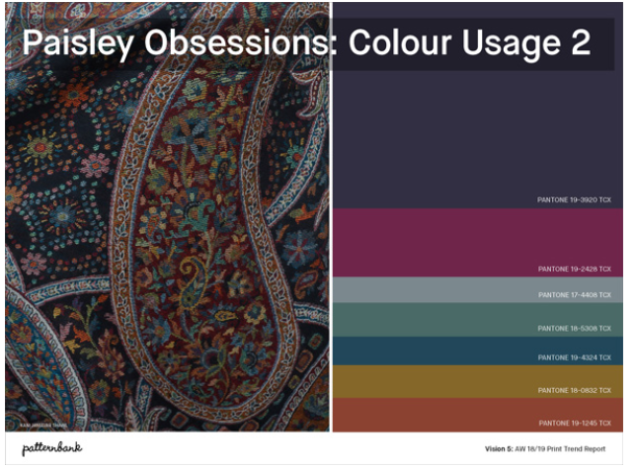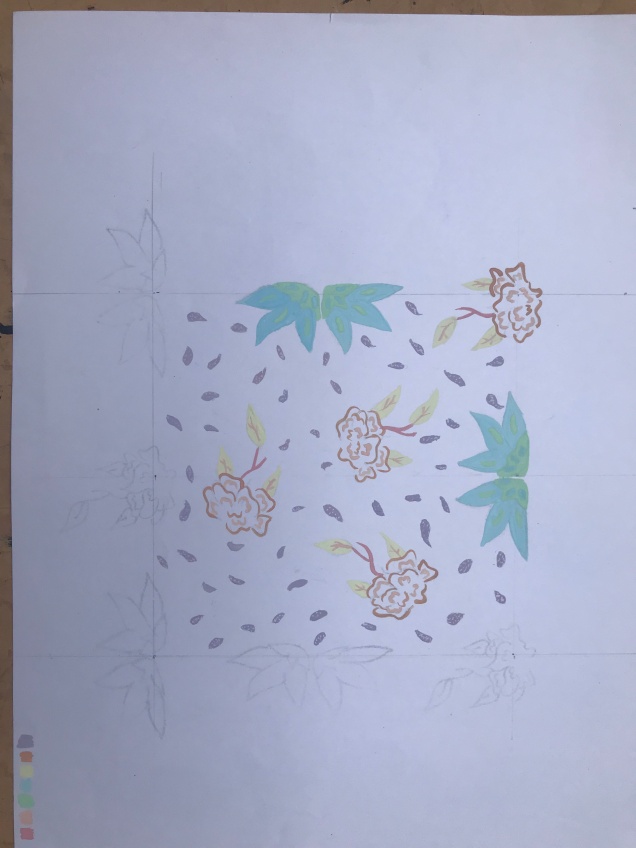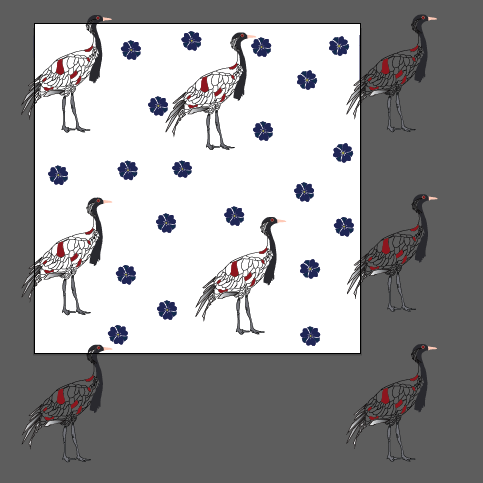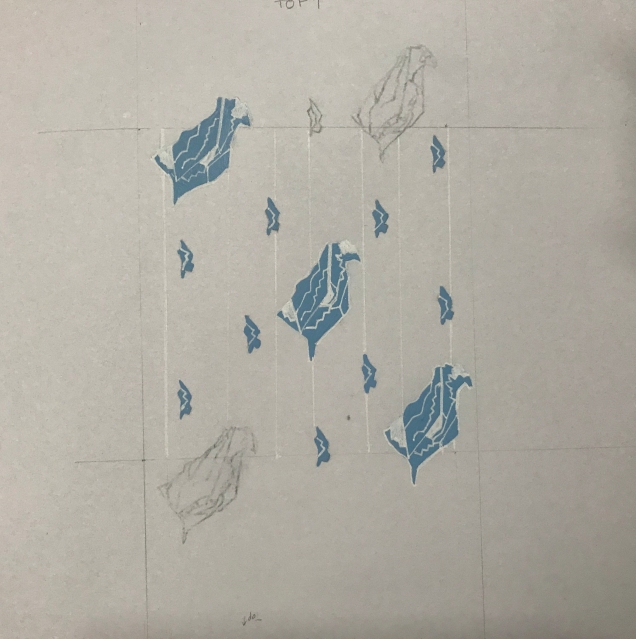SCREEN PRINTING
Our first class we discussed about screen printing, and were told to research about it .
Screen printing is just an elaborate, highly developed form of stenciling that can be traced all the
way back to the cave paintings of our Stone Age ancestors. Cave men must have figured that if
they use a leaf with some sort of colorant , and put them on the wall, they could use them as a
way of drawing a certain shape without the drawing part.In the middle ages, stencils were used as
a cheap method to mass produce playing cards.Wallpaper became chic early on in the 17th
century, and stencils were used to help decorate the elegant homes of the rich and famous.
Stencils were also used in the flocking process to transfer glue in the shape images onto paper,
which was then sprinkled with wool dust to reveal embroidery-like designs.Meanwhile, a process
was developed in Japan and China that used silk held between two pieces of strong, waterproof
paper with stencils cut in them. The paper was glued together, leaving the silk exposed to allow
the paint to flow through. Slowly but surely, the screen print was being born.
Screen printing today is arguably the most versatile of all printing processes. It can be used to
print on a wide variety of substrates, including paper, paperboard, plastics, glass, metals, fabrics,
and many other materials. including paper, plastics, glass, metals, nylon and cotton. Some
common products from the screen printing industry include posters, labels, decals, signage, and
all types of textiles and electronic circuit boards. The advantage of screenprinting over other print
processes is that the press can print on substrates of any shape, thickness and size.
Screen printing consists of three elements: the screen which is the image carrier; the squeegee; and ink.
A screen made of a piece of porous, finely woven fabric including silk, polyester or nylon is
stretched over a wooden or aluminum frame. Areas of the screen are blocked off with a nonpermeable
material (a stencil) which in turn is a negative of the image to be printed.
The screen is placed on top of a piece of paper or fabric. Ink is placed on top of the screen, and a
rubber blade is used to spread the ink evenly across the screen. The ink passes through the open
spaces in the screen onto the paper or fabric below; followed by lifting of the screen. The screen
can be again be re-used after cleaning. For multiple colour screen printing on the same surface,
the ink is allowed to dry and then the entire process is repeated with another screen and different
colour of ink.
Screen printing technique make use of and is compatible with a variety of materials, including
textiles, ceramics, metal, wood, paper, glass, and plastic. It is this quality that allows this printing
technique to be used in different industries, from clothing to product labels, fabric labels to circuit
board printing etc.
Project Title: Expressions, Broken yet Better!
“There is a crack, a crack in everything. That’s how the light gets in”
Description: In this project we learnt to create forms & iterate to create a textile repeat aligned to market expectation in terms of print.
Method: Discussions of the project and its relevance, significance, application and expected outcome –This could be anything stitched/ unstitched/ accessory/scarf/stole/ a detached collar/shrug/shawl/ with finishing in lace/crochet/border or in raw edges.)
Kintsukuroi is the Japanese art of fixing broken pottery with lacquer resin dusted or mixed with powdered gold, silver, or platinum. The Japanese art of Kintsukuroi, repairs broken pottery with seams of gold. This repairs the brokenness in a way that makes the object even more beautiful than it was prior to being broken. It is a long and difficult process, but the results are treasured by those around it. Uplifting and hopeful, it is an inspiring metaphor for dealing with the times we feel broken in life. It’s a reminder to find the gold to mend ourselves.
Kinstukuroi method briefly states that, what is important is, not the cause of destruction of the object but that beautiful symbol/event that has occurred in the life of the object. And also, how that symbol has taken up by many people in their own beautiful way to create something even more beautiful, and enchanting.
Similary , in class we broke a glass bottle and studied the glass pieces and drew forms according to our study .
We looked at the outline and cracks o the glass pieces and drew the forms .
According to these forms .We learnt to do repeats .
Our first repeat was horizontal repeat .
Repeat - Horizontal repeat Size - 3'X3' colour- 1-2 Age- 18-21 End use -Scarf
I first chose the form and the traced it . I used a single black colour to finish my repeat .

REPEAT - vertical repeat Size- 4.5'X4.5' colour -2 Age- 25-30 end use - shirting
Repeat - Corner repeat Size- 4.5'X4.5' Colour-1 Age-30 End use -scarf
Repeat 4- straight repeat Size- 6'X6' Colour- 4 Age-18-21
Repeat - All over repeat Size- 9'X9' Colour-4 Age- teens End use - dress Trend-print direction - in the jungle ss18
Repeat - alternate repeat Size- 6'X6' Colour-4-6 Age-3-6 End use - tshirt Trend - oriental prints ss2018
Repeat - Diagonal repeat Size- 6'X6' Colour- 4-6 Age- 9-12 unisex End use - tshirt trend - print direction - orbital
Repeat - brick repeat Size- 6'x6' Colour-4-6 Age- 25-30 End use - tie trend - paisley obsession

Repeat - Mirror repeat Size- 6'X6' Colour- 1-2 Age- 18-25 End use - hankerchief trend - patchwork sripes

Repeat - jaal repeat Size- 6'X6' Colour- 4-6 End use - bed sheet form - kalamkari inspired
Repeat - Cricle repeat Size- 6'X6' Colour- 4-6 Age- 25-30 End use - shawl trend - fragmented flowers a/w 17-18

Repeat -Diamond repeat Size- 6'X6' Colour- 4 Age- 18-25 End use - jacket trend - wild conversations a/w 18-19

Repeat -Ogee repeat Size- 9'X9' Colour- 6-8 End use - Furnishing Form - floral default Repeat -Cross repeat Size- 6'X6' Colour- 6-8 Age- 25 - 30 End use - Cardigan Trend - Pale garden a/w 18

Digital print Trend - kabuki kingdom



I made a second choice for digital print as was not satisfied with the first outcome . I used my learning from this class and used it in a project for my creative technical class . Getting inspired by the Japanese illustrations on their garments depicting their daily life , I made my print based on the city i live in and the modern life .

Block repeat
Size -6″x6″
colour – 1
Project 2
STENCIL
History
The use of stencils dates back over 37 thousand years, as evident in Neanderthal cave art found in Spain. These paintings are outlines of hand prints; it is theorised that Prehistoric man or woman would place their hand against the wall, and then blow finely crushed pigment around it. These stencils were accompanied by shapes from the natural world and daily life: animals, hunting scenes, and ritual all figure prominently.Over time, the use of stencils spread throughout the ancient world. Many of the detailed drawings and intricate art found in Egyptian tombs or along the walls of the city of Pompeii were results of stencils. Stencilling was a simple and well-thought-out way to reproduce the same pattern over and over again.
The Chinese were the first to develop a paper-based stencil, around 105 AD, and used the invention to advance their printing techniques. Soon, stencilling made the transition to cloth and colourful patterns were transferred onto garments. The Japanese improved upon the technique by bonding delicate stencils together with human hair or silk. Their method of dyeing fabrics with stencils is known as Katazome, and used the paste resist method. With this technique, a paste (usually composed of rice flour) is pushed through a stencil, defining a pattern on cloth. The places where the sticky paste adheres to the cloth resist colour in the dyeing process, therefore creating a negative stencilled design on the fabric.
Stencilling eventually spread to Europe, thanks to the trade routes from the East. The technique of stencilling became quite popular, and was used to add colour to master prints. Stencils became handy in mass productions of items, including manuscripts, playing cards, book illustrations, fabrics, and wallpaper.Immigrants brought the use of stencilling with them to the New World, and once again the technique was employed in a variety of ways and new styles were developed. Stencils were used as decoration in the home, on furniture, and in works of art. Stencilling once again became popular for architectural designs in the early 20th century, as craftsmen took advantage of mass-produced designs from an array of periods, including Renaissance, Victorian, and Art Deco.
This stenciling style can still be found in public buildings, churches, and homes.
The key advantage of a stencil is that it can be reused to repeatedly and rapidly produce the same letters or design.Stencils may have been used to colour cloth for a very long time; the technique probably reached its peak of sophistication in Katazome and other techniques used on silks for clothes during the Edo period in Japan. In Europe, from about 1450 they were commonly used to colour old master prints printed in black and white, usually woodcuts.[3] This was especially the case with playing-cards, which continued to be coloured by stencil long after most other subjects for prints were left in black and white.[4] Stencils were used for mass publications, as the type did not have to be hand-written.
For stencil printing , I took the theme of sea creatures and underwater life .
I drew the stencils , cut them and then experimented on different fabrics .
My Hit and trails
Final stencil and stencil prints
My final garment
Block Printing
Screen Printing
We gave a repeat for screen printing as a class .

Reflections
I learnt the ability to think visually and create forms according to words and emotions through the kinstukuroi glass breaking experiments . I learnt the technical aspects of how a print comes to be on a fabric , straight from the ideation to how to convert it, through the trip to kalaniketan. I learnt how to balance requirement of a project brief and the aesthetic of the print .
I learnt different forms of printing and how their final outcomes are different . I learnt how paint acts on different fabrics and how the textures come along.
Overall this course gave me an Insightful experience in textile and different printing techniques .
































































